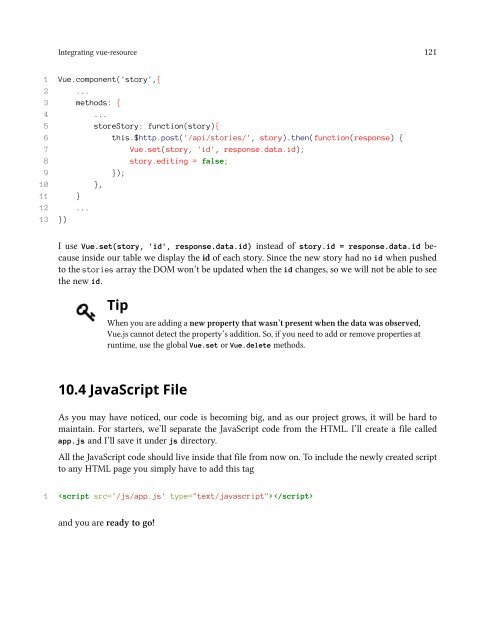vuejs
Create successful ePaper yourself
Turn your PDF publications into a flip-book with our unique Google optimized e-Paper software.
Integrating vue-resource 121<br />
1 Vue.component('story',{<br />
2 ...<br />
3 methods: {<br />
4 ...<br />
5 storeStory: function(story){<br />
6 this.$http.post('/api/stories/', story).then(function(response) {<br />
7 Vue.set(story, 'id', response.data.id);<br />
8 story.editing = false;<br />
9 });<br />
10 },<br />
11 }<br />
12 ...<br />
13 })<br />
I use Vue.set(story, 'id', response.data.id) instead of story.id = response.data.id because<br />
inside our table we display the id of each story. Since the new story had no id when pushed<br />
to the stories array the DOM won’t be updated when the id changes, so we will not be able to see<br />
the new id.<br />
Tip<br />
When you are adding a new property that wasn’t present when the data was observed,<br />
Vue.js cannot detect the property’s addition. So, if you need to add or remove properties at<br />
runtime, use the global Vue.set or Vue.delete methods.<br />
10.4 JavaScript File<br />
As you may have noticed, our code is becoming big, and as our project grows, it will be hard to<br />
maintain. For starters, we’ll separate the JavaScript code from the HTML. I’ll create a file called<br />
app.js and I’ll save it under js directory.<br />
All the JavaScript code should live inside that file from now on. To include the newly created script<br />
to any HTML page you simply have to add this tag<br />
1 <br />
and you are ready to go!


